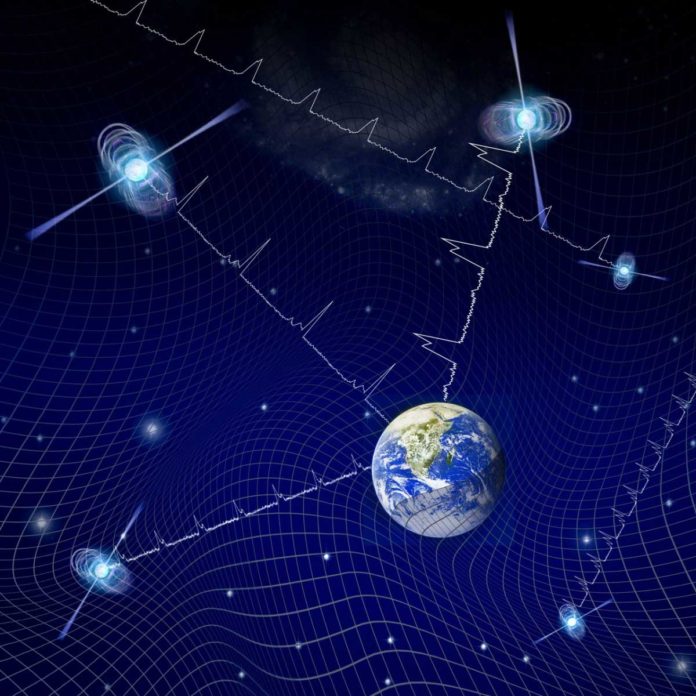By studying more than 12.5 years of data gathered from the national radio telescopes at Green Bank, West Virginia, and the recently collapsed dish at the Arecibo Observatory in Arecibo, Puerto Rico, astronomers found possible hints of gravitational waves from gigantic, colliding black holes in distant galaxies. Astronomers detected the first faint, low-frequency whispers that may be gravitational waves from black holes.
The astronomers are all participants in the North American Nanohertz Observatory for Gravitational Waves (NANOGrav) project, which uses pulsars that act as wave detectors and cosmic timekeepers.
Merging supermassive black holes create gravitational waves that can send ripples through space-time and influence a pulsar’s timekeeping regularity– eventually demonstrating that Earth’s situation in the universe may have slightly shifted.
Shami Chatterjee, Ph.D. ’03, a Cornell principal research scientist in the College of Arts and Sciences’ (A&S) Department of Astronomy, said, “We must be clear: We are not yet claiming to have detected gravitational waves. We have detected a signal that is consistent with the existence of gravitational waves, but we can’t prove that quite yet. We think this is the tip of the iceberg, but we have to demonstrate it to our satisfaction.”
The merger set off kilohertz waves that were many kilometers long, small enough to permit Earth-based detectors to capture them from kilometer-wide, land-based sensors. That finding affirmed a significant forecast of Albert Einstein’s 1915 general theory of relativity.
In the NANOGrav case, gigantic black holes are in the process of merging.
James Cordes, the George Feldstein Professor of Astronomy (A&S), said, “The masses we’re talking about are the giant black holes that are in the centers of galaxies. They are a billion times the mass of the sun. They’re monsters.”
“And these monsters are generating nanohertz-scale gravitational quavers that are light-years in length. Thus, astronomers enlist pulsars to help detect these waves.”
Almost 47 pulsars were studied to gather this data. Currently, the astronomers are using 80 pulsars.
Cordes said, “The plan is for the project’s astronomers to use about 200 pulsars, once they secure telescope time on other radio telescopes – to replace the time lost at the Arecibo Observatory, which recently collapsed.”
The press conference highlighted the research, “The NANOGrav 12.5-year Data Set: Search for an Isotropic Stochastic Gravitational-wave Background,” published Dec. 24 in The Astrophysical Journal Letters.
Journal Reference:
- Zaven Arzoumanian et al. The NANOGrav 12.5 yr Data Set: Search for an Isotropic Stochastic Gravitational-wave Background. DOI: 10.3847/2041-8213/abd401
